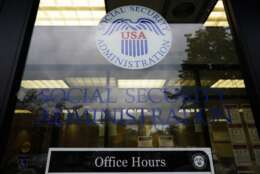Hiring/Retention
-
The Government Accountability Office found increased telework helped some agencies recruit and retain employees — but pay and workload played a bigger role.
November 22, 2024 -
The background investigations inventory at DCSA has been growing for more than a year. Now officials are trying to address bottlenecks in the process.
November 22, 2024 -
Much of the EPA workforce is already eligible for retirement, and may decide to retire before the incoming Trump administration, former EPA officials say.
November 21, 2024 -
Citing productivity increases, O’Malley defended SSA telework levels, but urged more resources to support staff and improve customer service.
November 20, 2024 -
House lawmakers expressed bipartisan frustration with the VA's inaccurate budget forecasts.
November 20, 2024 -
Nontraditional hiring, pay authorities were among the factors that let DoD significantly reduce its cyber workforce shortage over the past year.
November 11, 2024 -
A key part of the Department of Commerce’s federal hiring strategy is communicating with job candidates to form personalized, “high-touch” connections.
November 08, 2024 -
The reappearance of a policy similar to Schedule F is likely, federal workforce experts say. But it would look different in a second Trump term.
November 08, 2024 -
If the Trump administration is stalled in implementing Schedule F, experts say it has other levers to pull to target federal employees.
November 06, 2024 -
“Tech to Gov” job fairs are helping agencies recruit AI and cybersecurity experts from the private sector to join federal service.
November 05, 2024 -
A new plan offers short and long-term recommendations to streamline the 90-or-so steps it takes to onboard employees in the Office of the Secretary of Defense.
November 04, 2024 -
A new NAPA report on “organizational health” takes pre-pandemic management strategies and updates them for the modern federal workforce.
October 31, 2024 -
In Hawaii, Alaska and U.S. territories, agencies are facing heightened challenges with hiring and retaining the federal workforce, GAO found in a recent report.
October 30, 2024 -
Kristy Daphnis, the federal workforce branch chief at OMB, said an upcoming cross council meeting of the CHCOs and PIOs will focus on organizational health.
October 29, 2024 -
Letter carriers, in hundreds of social media posts, have voiced their frustrations and tried to organize their coworkers to vote against the deal.
October 28, 2024















